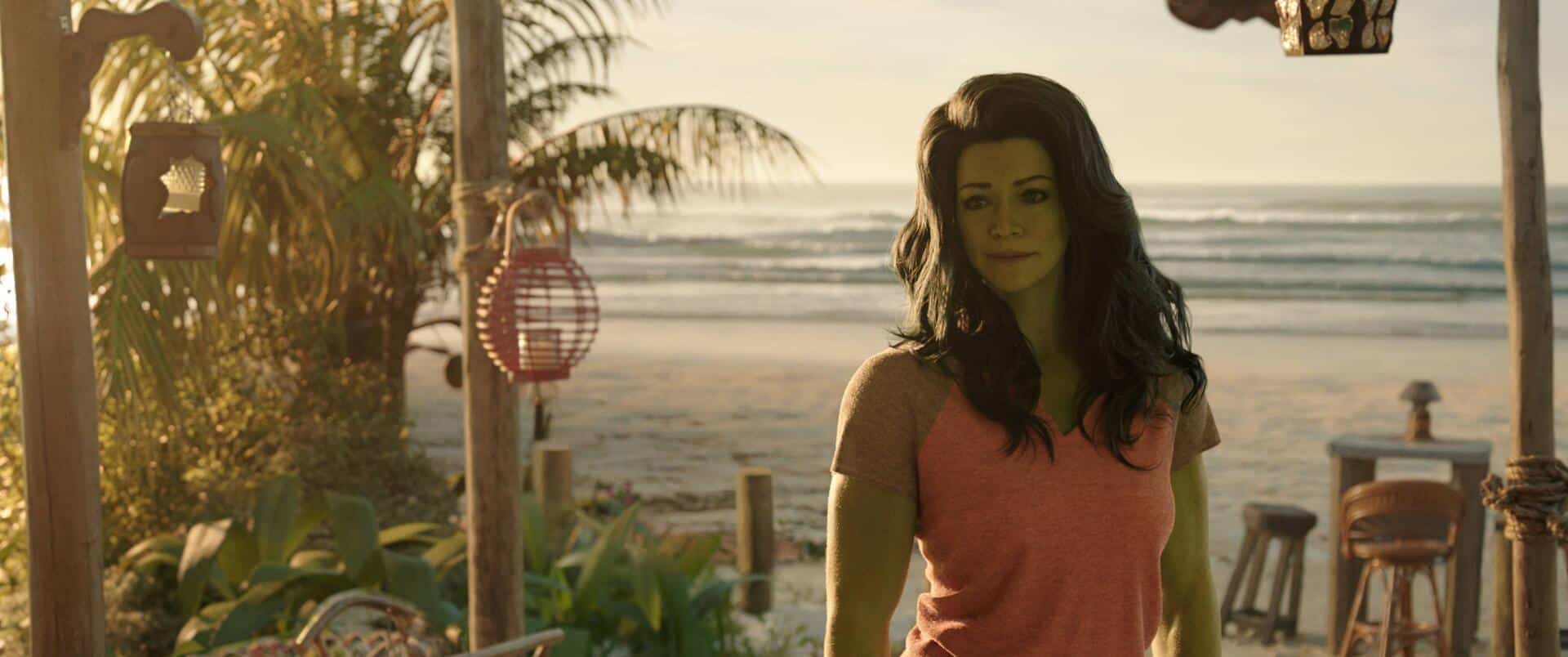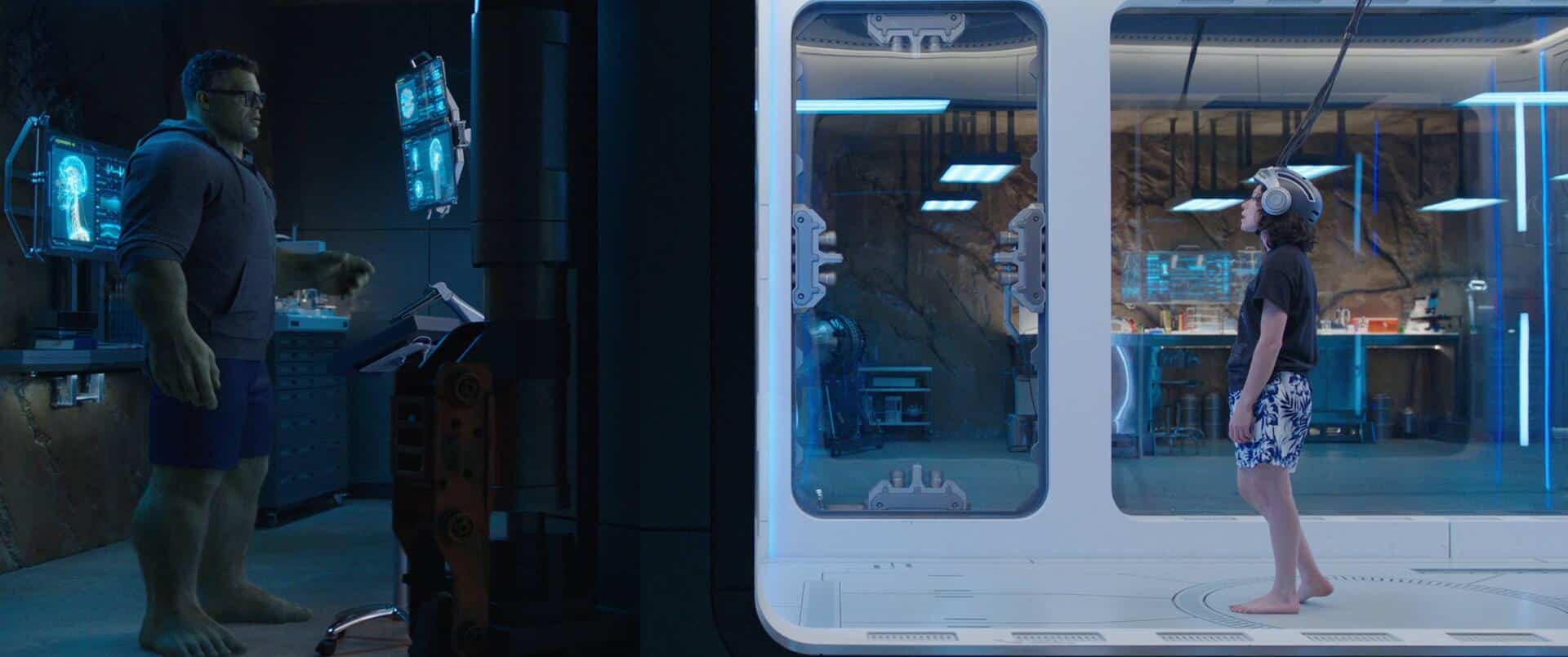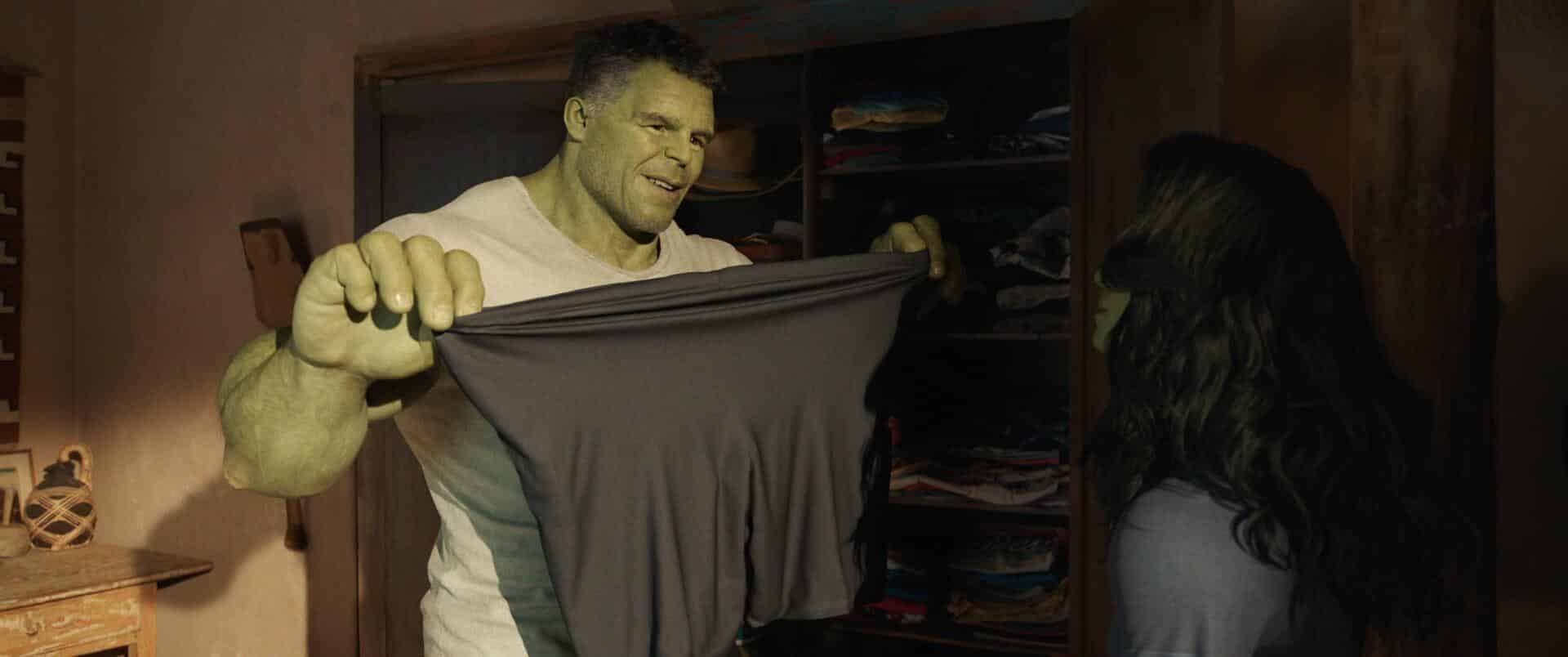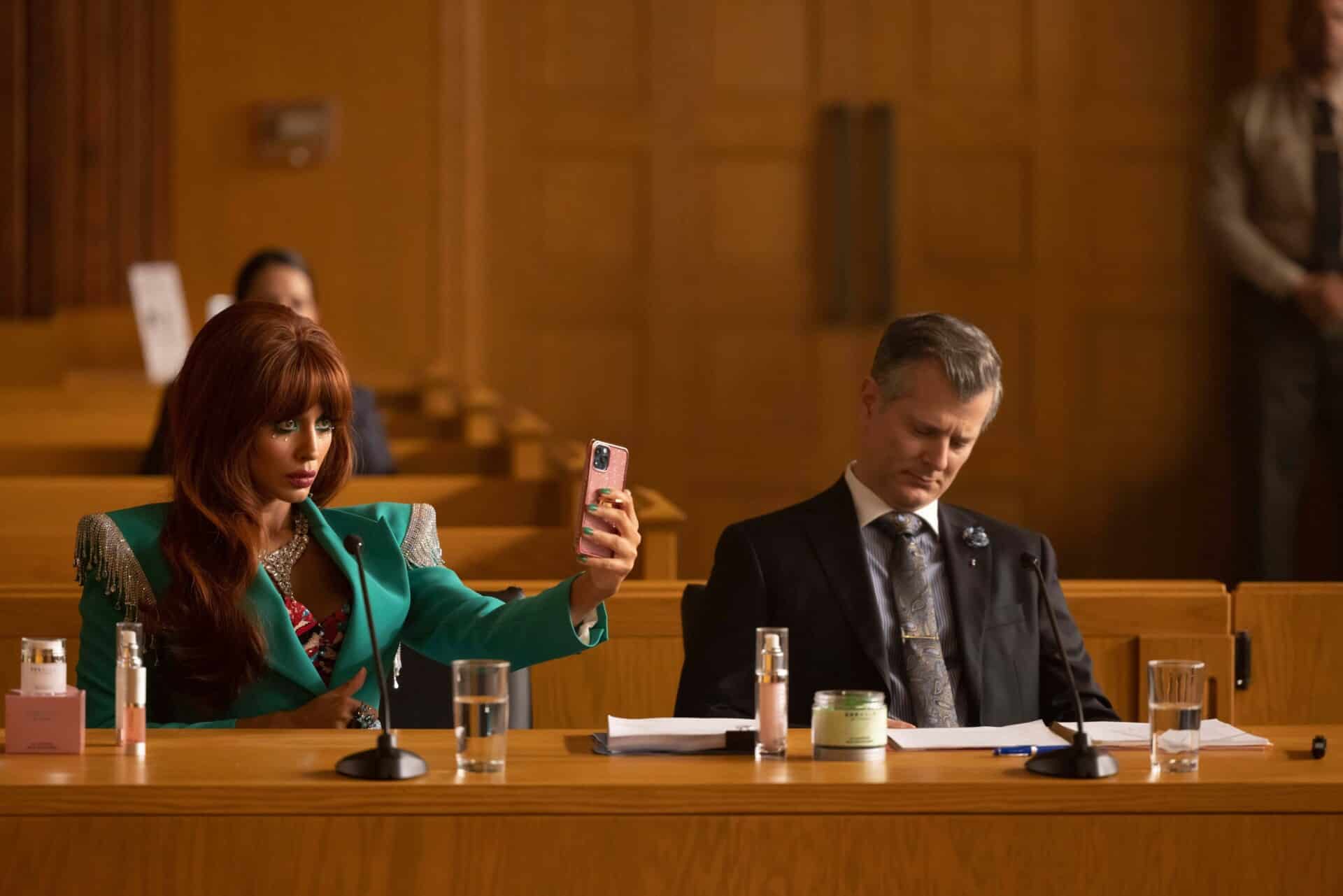This discussion and review contains spoilers for She-Hulk episode 1, “A Normal Amount of Rage.”
Much of “A Normal Amount of Rage” is given over to Bruce Banner (Mark Ruffalo) trying to train his cousin Jennifer Walters (Tatiana Maslany) in the art of being “a Hulk.” In particular, Bruce focuses on the idea of “dialectical behavior therapy.” According to Bruce, “It allows us to hold two opposing truths at the same time.” This seems like a good approach for a superhero built around a split personality. However, it also feels like She-Hulk itself could do with some “dialectical behavior therapy.”
Drawing from the source material, She-Hulk makes a big deal of the fact that Jen doesn’t share Bruce’s fractured personality. There aren’t two competing selves fighting for control of a single body. This shocks Bruce. “You’re still Jen, right now?” Bruce asks, when he realizes that Jen is still in charge of her superpowered form. “This is incredible. You don’t have an alter ego! You’re the only one in there?” This has always been part of what distinguished Jen from her more famous cousin.
Unfortunately, the show itself is not so lucky. There is a tension that runs through the early episodes of She-Hulk but that is especially apparent in the premiere, as the series finds itself caught between two competing sets of obligations that it struggles to reconcile. It is obvious that the production team wants to try something new within the framework of the Marvel Cinematic Universe (MCU). However, it’s also obvious that they don’t want to try something too new.
She-Hulk aspires to be more overtly comedic than other shows and movies in the shared universe. Director Kat Coiro has talked about how the production team wanted the show to be “a little bit like Ally McBeal.” Kevin Feige has pitched it as “a half-hour legal comedy,” and the episodes screened for critics all have runtimes around the 30-minute mark. Even within “A Normal Amount of Rage” itself, there are suggestions of something a bit different, like Titania’s (Jameela Jamil) charmingly chintzy costume.

Certainly, the show’s willingness to have Jen directly address the camera, while both lifted directly from the comics and an extension of the framing devices of both Iron Man 3 and Thor: Love and Thunder, marks a formal departure within a largely aesthetically homogenous shared universe. There is a sense within “A Normal Amount of Rage” that She-Hulk wants to be something just a little bit different from the increasingly overwhelming volume of Marvel content on Disney+.
However, it is also clear that She-Hulk is afraid to do anything too different or too radical within the framework of the larger brand. It is immediately obvious that nothing in She-Hulk is going to be quite as heightened as non-MCU-adjacent projects like M.O.D.O.K. or Legion. There’s a tension at play in the show, which Jen acknowledges in her first break of the fourth wall, directly addressing the audience and assuring them that this is still a superhero show that ties into larger continuity.
“It’s true, I am a Hulk,” Jen confesses to the viewer. “And I’m guessing you’re not going to be able to focus on this fun lawyer show until you know all about that.” This sets in motion what is effectively an episode-long flashback that serves as a fairly slapdash and paint-by-numbers origin story that often feels more like a narrative checklist than an actual story that the show is particularly interested in telling. There is a sense of obligation to “A Normal Amount of Rage,” which is not ideal for a series premiere.
There is an ongoing debate about the role of origin stories in mass media adaptations of superhero stories, particularly when it comes to ubiquitous characters like Batman or Spider-Man. At this point, the audience has seen enough superhero stories that they know how this sort of plot works. Spider-Man: Into the Spider-Verse was even able to play with that, condensing its heroic origin stories into a series of accelerated monologues and reducing its villain origin to an impressionistic flashback.

There are arguments both for and against the origin story. In defense of the origin story, superhero comic book stories are stuck in a perpetual second act, and so origin stories are the rare stories where the hero is fundamentally different at the end than they were at the beginning. On the other hand, many origin stories are generic and interchangeable, and they can delay the thrill of seeing a hero be a hero.
“A Normal Amount of Rage” manages to somehow have the worst of all possible worlds when it comes to its superhero origin story. Jen becomes the Hulk after she ends up in a freak car accident while traveling with her cousin Bruce. Some of his blood ends up in her wound, and so she transforms. Then Bruce takes her to the tropical holiday home that he has kept as a “loaner” from Tony Stark (Robert Downey Jr.) and trains her in the art of heroism.
That is three sentences. They could be covered in two lines of dialogue or a 30-second montage. Instead, “A Normal Amount of Rage” extends them to a full half-hour of television. The episode’s framing sequence even draws attention to the redundancy of the origin, as a distraction from the “fun lawyer show” that She-Hulk clearly wants to be. Jen’s aside is supposed to be knowing and charming. Instead, it feels somewhat cynical. The show is rushing to make the criticism before the audience can.
It also doesn’t help matters that the extended (and largely inert) origin story in “A Normal Amount of Rage” plays into the elements of She-Hulk that have attracted the most critical pre-release press coverage. Recent weeks and months have seen extensive and justified criticisms of how Marvel Studios uses VFX. In particular, how the studio’s approach to the technology not only leads to underwhelming results, but also exacts a heavy toll from those working in the field.

She-Hulk is a show that is more obviously dependent on VFX than many of the streaming shows to this point, particularly recent shows like Hawkeye or Moon Knight. It doesn’t help that the show is using both the existing and refined model for Ruffalo’s Hulk and an obviously newer and less detailed model for Maslany’s Hulk. The effects aren’t great. In particular, there’s an unsettling weightlessness to the sequences intended to showcase the power of these titanic figures.
There is also a sense in which “A Normal Amount of Rage” is toothless. The two most significant characters in the episode are Bruce and Jen, but the episode is careful to avoid any meaningful conflict between the two. The two fight towards the climax of the episode, but it never feels especially meaningful or significant — whether materially or emotionally. There is no weight to any of the blows that the characters land on each other — whether verbally or physically.
Bruce is incredibly condescending and patronizing to his cousin over the course of their training. “You can’t be emotional!” he lectures her at one point. However, when Jen later points out that accusations of being “emotional” are often gendered and used to delegitimize women, the episode never acknowledges that Bruce literally did just that. Indeed, Bruce’s self-righteous lectures about keeping the world safe ring hollow, given he never answered for leveling Johannesburg.
Indeed, there is a strange sense of pandering in all this, as if She-Hulk is worried that audiences might not embrace the show without firm tethers to existing continuity. In some ways, the repeated and unnecessary dialogue references to figures like Steve Rogers (Chris Evans) and Tony Stark call to mind similar conversations in Eternals, another recent example of a Marvel Studios property that feels decidedly anxious about the ways in which it departs from the established template.

It is admittedly charming to see the debate on whether Steve Rogers was a virgin happen in-universe, even if the decision to treat the conversation as something that needs an affirmative “yes, definitely!” feels a little uncomfortable. There is potentially something in the idea of Banner as one of the last of his generation of heroes that might be worth exploring, but Ruffalo isn’t a lead on She-Hulk. He is a special guest star. So this name-dropping doesn’t really add anything to the show.
Allowing for these sizable problems, there is some charm to “A Normal Amount of Rage.” The recurring joke about everything at Bruce’s compound being “Hulk-sized” is quite funny, particularly given that Maslany isn’t an especially tall actor in her own right. Maslany herself is a solid lead, even if “A Normal Amount of Rage” feels like a roadblock on getting into her own show. Although Titania only appears briefly at the end of the episode, her costume captures the mood towards which the show seems to aspire.
Still, there’s some small irony in the fact that Jen Walters establishes herself as a superhero who doesn’t have two personalities at war with themselves, while She-Hulk introduces itself caught in an obvious identity crisis.






Published: Aug 18, 2022 11:00 am